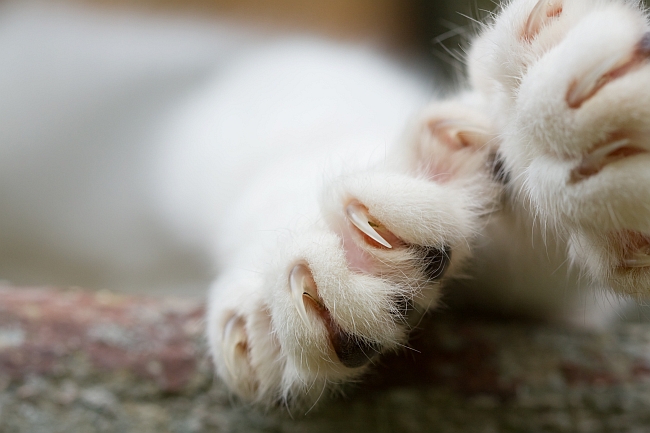
Over the past few years, the practice of surgically removing a cat’s claws has become more widely regarded as an unethical choice. Declawing a cat is not the same as a human clipping their fingernails. Claws are part of the bones deeply imbedded into a cat’s paws, and the nerve endings surrounding the claws themselves are very sensitive. When a cat’s claws are removed, he feels the way a human would if his finger was pulled or cut off just below the first knuckle. Not only is the procedure painful for the kitty, but the recovery, soreness and lack of balance that follows is acute. A cat’s toes take time to completely heal, and feel sore and swollen in the meantime. The cat runs the risk of losing feeling in his paws, or of developing infections from walking in litter boxes, or soiled floors that would allow bacteria to access his healing wounds. In addition to this, his balance may be off since the claws which helped the kitty control his poise are no longer as his disposal. It may be a few days before he kitty can regain his full agility and confidence. For these reasons, declawing a cat has become a hotly contested issue that is causing my long-time pet owners to reconsider going through with the surgery. Fortunately for cats across America, people are beginning to realize that declawing a cat is not only painful for the feline, but is also detrimental to a cat’s lifestyle, demeanor and ability to defend itself.
Beyond the initial recovery process and the potential hazards involved, cats develop additional behavioral issues caused from having no claws. In losing the ability to scratch, a cat has no first line of defense, and will often resort to biting in order to protect himself when he feels threatened or insecure. House trained cats accustomed to using litter box can also find the gravelly and sandy texture to irritate his tender paws after the surgery, causing him to be more likely to eliminate somewhere else. This inclination is heightened since a cat no longer can “mark” his territory through scratching, he may urinate around the house to establish a sense of authority.
In spite of the negative aspects of declawing a cat, many pet owners continue to do so. They choose to declaw their cat if their furniture or carpet is getting ruined, or if they are physically afraid of being scratched during play time. People with children worry that their pet could harm, scratch or even scar their kids, and declaw the cat out of fear for their children. Additionally, many people have no idea of the pain and vulnerability that results from a cat being without claws. Whatever the reason for permitting the surgery may be, the moment pet-parents become aware of what the process entails, they are responsible to protect their cat by finding other means of dealing with their claws. Fortunately, there are many ways to ensure that your kitty will not be endangering the children or marking up your staircase.
Alternative to Declawing Your Cat

Trim your cat’s claws. Instead of pulling out the claw, lessen their power and sharpness by giving the nails and old fashioned clip. There is a thin red line in a cat’s claw indicating where the blood flow ends. Trim just beyond this vein, as clipping through it will both be painful for the cat, and will cause heavy bleeding. This way, your cat will still be able to work with his paws, and feel able to defend himself, without actually being able to hurt anyone.
Cap or buff the claws: Take your cat to a groomer, and have them put blunt plastic tips on the claws so that your kitty won’t be able to accidently hurt or cut through anything he scratches. This will still enable him to continue to practice healthy scratching without incurring any further damage to your furniture, curtains, or carpets. A groomer can also painlessly trim the claws and buff them until they are smooth and round.
Train him to scratch the right things. Make sure you have designated areas where your cat can freely scratch and claw on carpeted cat furniture or trees. By putting some cat nip on these areas, it will draw your cat to places where he is allowed to practice scratching. If you notice your kitty returns to the same “off-limits” areas to attempt to scratch, carry a spray bottle of warm water, and be prepared to squirt his back and say “No” loudly as a warning. Be careful not to hurt or actively discipline your cat, as this will just cause them to act fearfully toward you. Instead, help reassign the cat to areas where his scratching and pulling is welcome, such as a special carpet patch, or carpeted cat tree. In so doing, you will affirm the feline’s instinct to stretch his back and paws, and work those claws without running the risk of wrecking anything in the house.

